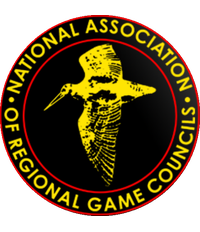Release of Poults
General “Must Do’s”
A firm and continuous predator control exercise must be carried out in the vicinity of the release pen area. It is utter folly to spend time and money releasing pheasant poults into an area which holds predators. Make sure you have a good supply of quality growers’ pellets at hand before you collect your poults from the game farm. Don’t expect to collect it on the way. Poults should be collected as early in the morning as possible from the game farm and transported as quickly as possible to a properly prepared rearing pen to avoid stress. Do purchase the NARGC video “Pheasants in Ireland”. Do purchase the various publications by the NARGC on game. All will provide useful tips.
The Pen
The location of the pen is vitally important for the safety and well being of pheasant poults. The pen should be sited as far away as possible from residential areas and busy roads, preferably facing towards the east to get the first sunshine of the day. It should be sited on dry ground that will not break up. It is an advantage not to have any surface water available as you then have full control if you need to dose or give any treatment through drinking water. A well constructed pen will last 15 years. So, do not cut cost or corners or do a shoddy job – there are numerous excellent publications and diagrams on the actual construction and materials. An electric fence is essential to keep out predators.
Good Husbandry
It is a bonus if you have somebody who is genuinely interested in the birds as opposed to someone doing the chore to fulfill a duty. The former will spend time in the pen every day observing the birds and will detect any disease at an early stage. Gapes and coccidiosis are the most common and easiest to detect. In the case of Gapes you will her a choking sound which, if treated immediately with Gapex or plain Panacur, (NB without S.C) a fast cure can be effected. In the case of coccidiosis you will notice the droppings have changed from a firm spot with a white top to a custard-like texture. If the disease is at an advanced stage, you will notice the wings dropping. Treat immediately with Bimadine. We advise you to contact your chemist or vet who will dispense and advise professionally.
See the different possible diseases that can effect Pheasants: Pheasants Diseases
Feed
By the time Poults reach 6 weeks old they should be gradually introduced to wheat in their feed so that by 8 weeks release time they should be on a diet of wheat completely. The same type of feeders and drinkers must be used outside the pen as was used inside. Poults can be trained very easily to respond to a call at feeding time such as a whistle, bell, etc. We find with hand fed birds that by shaking grain on the ground while using their familiar call, they will travel back in from a good distance from the pen they will be less likely to stray away completely.
Age at Release
It is generally accepted that when Poults are 6-8 weeks old, it is the optimum time for release. It is stated that older birds can be less adaptable to environmental change. However, a small well conditioned well feathered pheasant poult has a much better chance of survival than a much larger badly feathered poult which in actual fact has no chance of survival in the wild.
Release Method
The method of release is very important. The transition from a sheltered life in captivity to the great outdoors should be gradual and controlled with no stress to the poults involved. With grids fixed in the perimeter fence (see NARGC video), poults can walk out and return at their leisure. As days go by, they will move further from the pen, so it is advisable that they are turned back in before dusk each evening. It is important that poults have bare ground to use as a drying out place, and a good covered over dusting area, plenty of grit (washed sand) and water. Avoid releasing during periods of heavy rain, thunder showers or prolonged wet weather.
Study of the success of releasing Pheasants (1980's)
